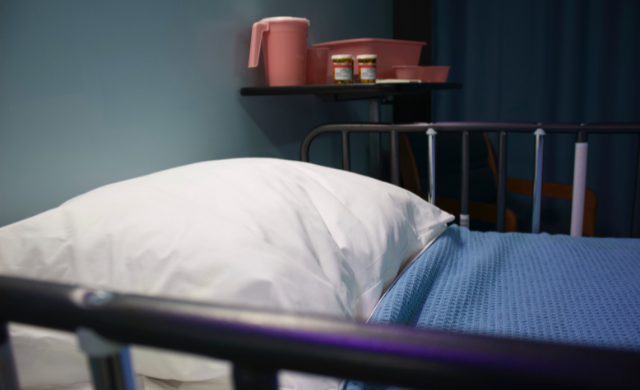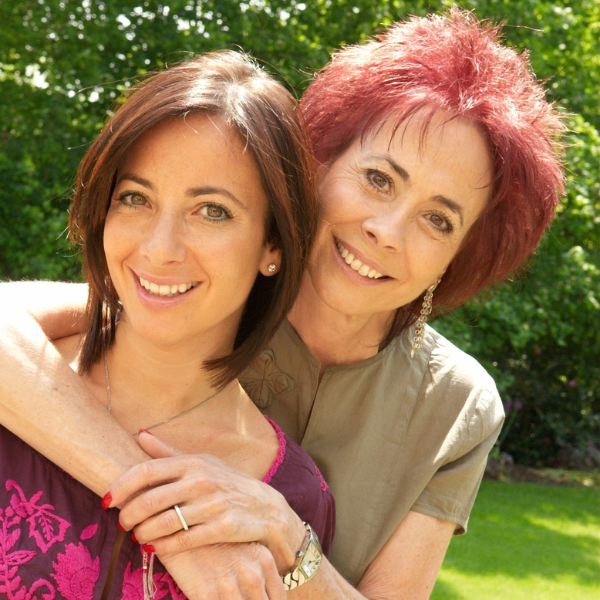
You may not have heard of lymphoedema before having breast cancer surgery, so in this Q&A we cover some important FAQS about the risks and treatment of lymphoedema following breast cancer treatment.
By Natalie Kruger
What is lymphoedema?
Lymphoedema is the collection of fluid (called lymph) in a part of the body. It occurs either because there is too much fluid for a normal, happy lymphatic system to process, or the lymphatic system isn’t working properly. The lymphatic system is a super important part of our body, with many jobs, one of those being to drain excess fluid from around our cells, and eventually return it back to our blood stream. It really is a super handy little system that’s taken for granted. It’s poorly researched, and its role in keeping our body swelling-free has been under-recognised until the last decade or so. You may find that many people have never heard of lymphoedema. Sometimes, even finding healthcare professionals with the knowledge required to assess, diagnose and treat lymphoedema can be a challenge. While this is incredibly frustrating for people with (or at risk of) lymphoedema, much is being done to improve awareness and access to care, all around the world.
There are 2 general types of lymphoedema, primary and secondary.
Primary lymphoedema is a rare genetic condition that leads to abnormal function or development of the lymphatic system. This may result in swelling and other problems. While primary lymphoedema is present from birth, symptoms may not ‘show up’ until later in life. Receiving a correct diagnosis is important so that the right kind of treatment can be provided.
Secondary lymphoedema is more common and develops when something is done to an otherwise normal lymphatic system. For example, treatment for cancer where lymph nodes are removed or damaged. Specific to breast cancer, this is called breast-cancer-related-lymphoedema (BCRL).
While lymphoedema is not curable, there are lots of things that can be done to manage it. Think about taking care of your teeth. You go to the dentist, brush your teeth, floss and use that blue mouth-wash stuff. It’s the same with lymphoedema. Just add a healthcare professional for guidance, and some extra things to your usual self-care routine, and voila – a happier lymphatic system!

Who is at risk of BCRL?
Almost everyone receiving treatment for breast cancer has some degree of risk. Key risk factors include surgery, lymph node removal, radiotherapy and chemotherapy (especially, taxane based chemotherapy). The higher the number of lymph nodes removed, the greater the risk of developing lymphoedema. You might hear things like, axillary lymph node dissection or clearance. After procedures like this, all or most of the lymph nodes may be removed, which can be likened to removing the drainpipes from your shower. The water isn’t going to drain without a little help! (Introducing…lymphoedema treatment! More on that later.)
Does it matter how many lymph nodes were removed?
If you have had what’s called a sentinel node biopsy, often only one or two lymph nodes have been removed (if you’re unsure how many lymph nodes were removed, ask your healthcare professional). So, if we use the shower example above, many pipes may still be left and so the ‘shower’ may still drain just fine. However, if all the pipes are removed (as in the case of axillary lymph node dissection / clearance) the risk of developing lymphoedema is much higher. Generally, the risk of developing lymphoedema is less than 10% after a sentinel node biopsy, and somewhere around 20% (or more) in the case of axillary dissection / clearance. Remember, the higher the number of lymph nodes removed, the greater the risk of developing lymphoedema.
I’ve had some lymph nodes removed during my breast cancer surgery, what can I do to reduce my risk of developing lymphoedema?
Such a good question! There are many things you can do to help reduce the risk of developing lymphoedema. The trick is, to understand what your individual degree of risk is. Hopefully, if you are at high risk for developing lymphoedema, you have already been referred to your local lymphoedema service for ‘lymphoedema surveillance’. If not, connect with a healthcare professional and ask for a referral (or in some cases, you can refer yourself) to your local lymphoedema service. If you are based in the UK, more detail can be found here.
Risk-reduction strategies include:
- maintaining a healthy diet and body weight (an elevated BMI and weight gain are among the strongest predictors for lymphoedema developing to a more advanced stage)
- looking after your skin (this reduces the risk of infection, which may cause further damage to the lymphatic system)
- moving your body normally (movement is great for encouraging lymph to flow!)
- exercising regularly (starting slow and building up gradually – connect with a physiotherapist or exercise physiologist if you need more information)
While research evidence is lacking, people who are at high risk of developing lymphoedema may also like to purchase a compression garment for use during certain activities. It’s best to connect with a lymphoedema practitioner for individual advice around the type of garment best suited to your needs including what size you need, when to wear it, and how to order it. For more information, check out this brilliant resource from the British Lymphology Society.

What are the signs I need to look out for which might mean I’m developing lymphoedema?
The most obvious one here is seeing actual swelling. For example, your ring or watch may not fit properly in the case of arm lymphoedema. However, you don’t need swelling to be diagnosed with lymphoedema. In fact, early lymphoedema may have no swelling at all, but other signs may be present including heaviness, tightness or an ache in the affected area. Early diagnosis of lymphoedema is important, so that treatment has the best chance of success.
Waiting months for an appointment isn’t good enough, because the longer the symptoms are left untreated, the harder they are to manage. Request an urgent appointment with your local lymphoedema service or check your local lymphoedema society or network’s online directory to find a private provider (who’s waiting list may be shorter, or non-existent).
Remember that, in the case of BCRL, it’s not just the arm that’s affected. It can affect the breast, chest wall, side, arm, hand and fingers. So, pay attention to these areas as well.
What should I do as soon as I notice one of these signs?
Connect with your healthcare team and lymphoedema practitioner and follow their recommendations. In the case of a suspected infection (also called, cellulitis), you need an urgent medical review for assessment and the prescription of antibiotics. If you have sudden onset swelling, an ultrasound may be recommended to rule out a blood clot (also called, deep vein thrombosis). Once an infection or blood clot has been excluded or treated, your lymphoedema practitioner can step in and make sure you have all the tools you need to manage your symptoms.
I’ve got lymphoedema and I wear a compression garment, is there anything else that I can do at home to help ease the swelling?
Well done you, that’s a great start! Wearing a compression garment is a really fantastic way to support a struggling lymphatic system and is absolutely essential after the completion of complete decongestive therapy (CDT). Some people wear compression only during the day, while some also include night compression into their routine. The other important things to incorporate into your routine (just like the teeth brushing example!) include:
- maintaining a healthy diet and body weight
- looking after your skin
- exercising regularly
- performing self-lymphatic drainage (SLD) (your lymphoedema practitioner can teach you)
- using intermittent pneumatic compression pumps (these are available for purchase or hire from different companies, alongside advice from your lymphoedema practitioner)
What sort of professional treatment is available for lymphoedema patients?
The aim of treatment is to help the flow of lymph through the affected areas. This will help reduce swelling, improve the quality of the skin and tissues and reduce the risk of infection. While lymphoedema practitioners vary in their professional backgrounds (for example, massage therapist, nurse, occupational therapist, physiotherapist etc.), all undergo post-graduate training to support you in developing a treatment plan. Typically, this will include any of the following:
- skin, scar and wound care
- exercise advicemanual lymphatic drainage (MLD)
- prescription of compression bandages, wraps or garments
- prescription of intermittent pneumatic compression pumps
- diet and weight management advice
- other treatments such as laser or lymph taping
- complete decongestive therapy (CDT) – which is a combination of the above for people with moderate to severe lymphoedema, usually delivered in an ‘intensive’ and ‘maintenance’ phase
Surgical techniques may also appropriate for BCRL, including lymphovenous anastomosis (LVA), lymph node transfer (LNT) or liposuction. For more information, check out these brilliant resources from Oxford Lymphoedema Practice and the British Lymphology Society.

For how long after having lymph nodes removed am I at risk of developing lymphoedema?
While lymphoedema can unfortunately develop at any time during or following treatment for breast cancer, research evidence suggests that the risk is greatest within the first 3 years after surgery.
Does the risk increase or decrease with time?
While the risk of developing lymphoedema is greatest within the first 3 years of treatment, future risk is likely dependent on many factors. My advice would be to connect with your local lymphoedema service to understand your risk and learn more about what you can do to reduce it, based on your own individual circumstances.
What are your top 5 lymphoedema myths that you’d like to put straight?
Oh gosh…there are so many…but here I go…
MYTH 1 – There are no doctors who specialise in the lymphatic system or lymphoedema.
Wrong! In the UK, we are blessed with the likes of Professor Peter Mortimer, Dr Kristiana Gordon and Professor Vaughan Keeley who specialise in lymphatic medicine. So, having your healthcare professional refer to these experts (either privately or via the NHS) is an excellent idea. If you have been told that ‘you have lymphoedema, lift your arm above your head and there’s nothing you can do’ … I can assure you this is bad advice and there is in fact, plenty you can do. However, this all starts with a referral to a knowledgeable healthcare professional for a comprehensive assessment and diagnosis, followed by a referral to your local lymphoedema practitioner or service to get you on the right treatment track.
MYTH 2 – I can’t exercise because I have lymphoedema
Actually, you can, and you must! Research has shown that aerobic and resistance exercise is safe and does not increase the risk of developing lymphoedema (provided of course that any signs of lymphoedema are treated early). Examples may include walking, yoga, weights or swimming. However, you may wish to seek additional advice from your lymphoedema practitioner or exercise professional depending on your specific circumstances. Try to aim for 150 minutes of moderate exercise each week, starting slowly and gradually increasing over time, and modify any movements that make your symptoms feel worse. Want more information? Learn more from the British Lymphology Society.
MYTH 3 – Compression garments are ugly and make me look like my nana
Well, maybe I’m a bit bias here because I’m all for neutral colours…. but compression garments are super amazing and the hardest little workers of your lymphoedema toolkit! They’re like a big warm hug and do a brilliant job at keeping the lymph moving (so that it doesn’t set up camp, turn into fat, and stay there forever). Compression garments come in lots of different colours, styles, and fabrics, and I honestly think they’re the most genius things ever.
MYTH 4 – An NHS lymphoedema service doesn’t exist in my area so there’s nothing I can do
Wrong! Speak to your healthcare team (doctor, nurse, anyone!) and get referred to the next closest service (find one here). Or, if the wait list is too long, consider whether a private service might be right for you. Then, the next thing to do is write to your local parliament member and tell them about lymphoedema, the impact it has on your life, and the importance of accessible lymphoedema services. Fancy people who develop health services can’t develop things they don’t know are missing….so guess who’s job it is to tell them? Ours! Let’s band together and change the future!
MYTH 5 – Pain and reduced shoulder movement after breast cancer surgery is normal
No, it’s not. Your shoulder should move as it did before surgery, and if it’s not, you need a physiotherapy referral. Hopefully you were able to see a physiotherapist before or after your surgery, for a baseline assessment and exercises to complete to regain your movement and strength. If not, it’s never too late to seek that referral from your healthcare team and get that shoulder moving again. Unfortunately, chronic pain may be experienced by some people after breast cancer surgery, so onward referral to a pain clinic may also be helpful. For example, there’s a brilliant pain clinic at The Royal Marsden working magic and a referral can usually be done through your healthcare team.
MYTH 6 (yup, I snuck an extra one in here…) – I am the only one in my community with lymphoedema
Nope, I can almost guarantee that you are not. A celebrity once referred to social media as the ‘toilet of the internet’ (bless). However, it really is a great way to keep updated with the latest research, find out about events happening near you, and learn more about how to live your best life with lymphoedema.
Want more information?
There are some great resources out there…. why not check them out?
British Lymphology Society (or your local lymphoedema network or society if outside the UK)
Lymphoedema Support Network (also lots of resources available on their YouTube channel)
Oxford Lymphoedema Practice (for all things surgery)
LE&RN (amazing webinars & symposiums, including the book Let’s Talk Lymphoedema by Professor Peter Mortimer and Gemma Levine)

About the author
Natalie Kruger is a Cancer, Palliative Care and Lymphoedema Physiotherapist based in Australia.
Sources
DiSipio, T., Rye, S., Newman, B., & Hayes, S. (2013). Incidence of unilateral arm lymphoedema after breast cancer: a systematic review and meta-analysis. The lancet oncology, 14(6), 500-515.
Lee, B. B., Rockson, S. G., & Bergan, J. (Eds.). (2018). Lymphedema: a concise compendium of theory and practice. Springer.
Lymphoedema Framework. Best Practice for the Management of Lymphoedema. International Consensus. London: Medical Education; 2006. Best Practice for the Management of Lymphoedema: an international consensus – Wounds International
McDuff, S. G., Mina, A. I., Brunelle, C. L., Salama, L., Warren, L. E., Abouegylah, M., … & Taghian, A. G. (2019). Timing of lymphedema after treatment for breast cancer: when are patients most at risk?. International Journal of Radiation Oncology* Biology* Physics, 103(1), 62-70.
McLaughlin, S. A., Staley, A. C., Vicini, F., Thiruchelvam, P., Hutchison, N. A., Mendez, J., … & Feldman, S. M. (2017). Considerations for clinicians in the diagnosis, prevention, and treatment of breast cancer-related lymphedema: recommendations from a multidisciplinary expert ASBrS panel: part 1: definitions, assessments, education, and future directions. Annals of surgical oncology, 24, 2818-2826.
McLaughlin, S. A., DeSnyder, S. M., Klimberg, S., Alatriste, M., Boccardo, F., Smith, M. L., … & Feldman, S. M. (2017). Considerations for clinicians in the diagnosis, prevention, and treatment of breast cancer-related lymphedema, recommendations from an expert panel: part 2: preventive and therapeutic options. Annals of surgical oncology, 24, 2827-2835.
McLaughlin, S. A., Brunelle, C. L., & Taghian, A. (2020). Breast cancer–related lymphedema: risk factors, screening, management, and the impact of locoregional treatment. Journal of Clinical Oncology, 38(20), 2341.
Rockson, S. G., Keeley, V., Kilbreath, S., Szuba, A., & Towers, A. (2019). Cancer-associated secondary lymphoedema. Nature reviews Disease primers, 5(1), 22.
Further information
Future Dreams hold a range of support groups, classes, workshops and events to help you and your carers during your breast cancer diagnosis. These are held both online and in person at the London-based Future Dreams House. To see what’s on offer and to book your place, see here.
To return to the homepage of our Information Hub, click here where you can access more helpful information, practical advice, personal stories and more.
Reviewed July 2024
The information and content provided in all guest articles is intended for information and educational purposes only and is not intended to substitute for professional medical advice. It is important that all personalised care decisions should be made by your medical team. Please contact your medical team for advice on anything covered in this article and/or in relation to your personal situation. Please note that unless otherwise stated, Future Dreams has no affiliation to the guest author of this article and he/she/they have not been paid to write this article. There may be alternative options/products/information available which we encourage you to research when making decisions about treatment and support. The content of this article was created by Natalie Kruger and we accept no responsibility for the accuracy or otherwise of the contents of this article. The links and/or recommendations in this article to third-party resources are for your information and we take no responsibility for the content contained in those third-party resources. Any product recommendations made in this article are not product endorsements and unless otherwise stated, they are made without any affiliation to the brand of that product. We ask you to note that there may be other similar products available.
Share

Support awareness research
Donate to those touched by BREAST cancer
Sylvie and Danielle began Future Dreams with just £100 in 2008. They believed nobody should face breast cancer alone. Their legacy lives on in Future Dreams House. We couldn’t continue to fund support services for those touched by breast cancer, raise awareness of breast cancer and promote early diagnosis and advance research into secondary breast cancer without your help. Please consider partnering with us or making a donation.


